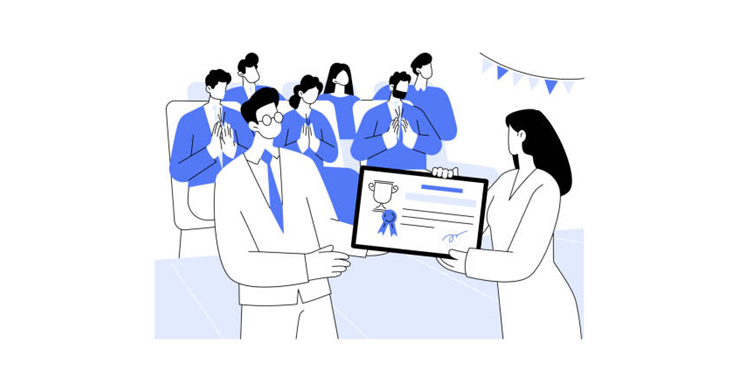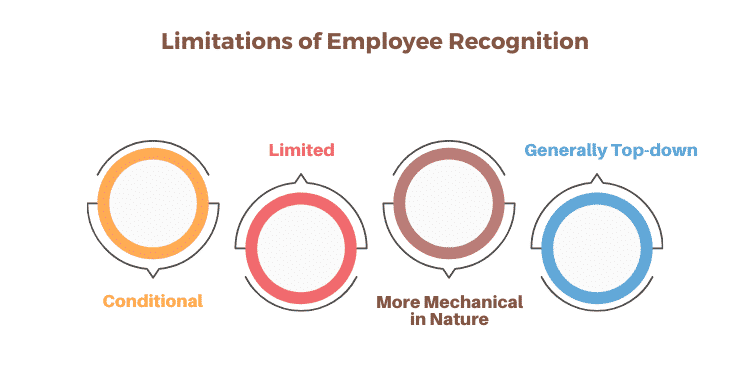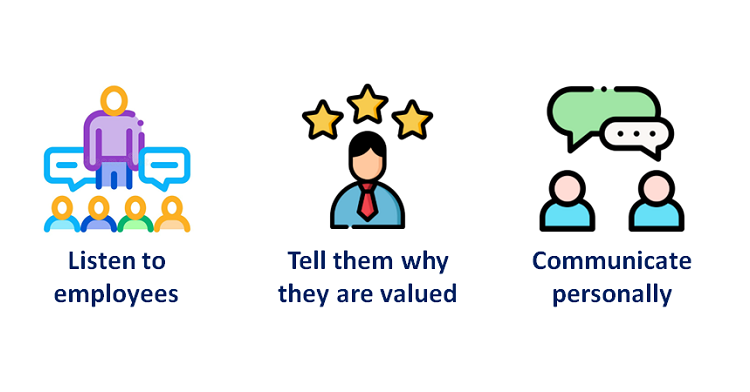Employee recognition and appreciation are two words used commonly in the context of making employees feel valued and motivated. It is quite common for organizations to use them interchangeably. They often ignore the difference between employee recognition and appreciation.
Both recognition and appreciation play important roles in ensuring higher motivation and engagement levels for the employees.
However, while recognition is more work-related, appreciation focuses more on the employee as a person.
Recognition is positive feedback given to employees for their performance at work. Based on this definition, recognition can be tangible as well as intangible.
Giving an award, bonus, raise, or even promotion based on his/ her performance are all examples of tangible recognition.

Thanking or praising someone verbally, or even sending a thank you note over email, forms part of intangible recognition.
These actions can prove highly motivating for employees and assure them that the organization is noticing and valuing their good work.
While recognizing employees in an organization is important, it does have its limitations.
Hence, understanding this is essential for business leaders to develop a comprehensive recognition program that provides the desired results.
The most common limitations of recognition are below:


Since recognition is primary for performance, employees need to perform exceptionally well to get recognition.
This can result in unhealthy competition among coworkers and also breed distrust and jealousy among them.

Since top performers in any organization are a small number, it restricts the coverage of recognition in the workforce.
Hence, it can make the unrecognized employees feel undervalued and even demotivated, which definitely cannot prove beneficial for any organization.

Recognition focuses only on the professional performance and achievements of an employee.
In most cases, it ignores the human aspect behind the performance and achievement, which makes the process more mechanical.

In most organizations, employees receive recognition primarily from their superiors.
Hence, this restricts the role of co-workers of the employees in deciding their worthiness for receiving recognition.
Experts feel that this is a major disadvantage of the recognition process.

Appreciation is the ability of an organization to acknowledge the inherent value of an employee.
Rather than just focusing on performance, it appreciates their worth as members of the workforce and as human beings.

Praising employees for supporting colleagues in a challenging project, or motivating co-workers during stressful times are examples of employee appreciation.
Experts consider appreciation to be critical to building trust and connection between employees and management in an organization.
Appreciating the employees helps enhance their loyalty and sense of commitment to the organization.
Well-appreciated employees feel naturally motivated to contribute to business growth and success in a dedicated manner.
So, here are a few effective ways in which organizations can appreciate their employees:


One of the best ways to show appreciation towards employees is to genuinely listen to what they have to say.
Whether it is their opinion about policies or grievances, listening to employees is an effective way of appreciating them.

Making employees aware of why the organization values them can prove more effective than the best employee rewards.
It can have a positive impact on the self-worth of employees besides strengthening their relationship with the organization.

Enquiring about the well-being of employees and communicating with them on a personal level is another way of appreciating them.
It assures them that the organization cares for their personal as well as professional growth.
Both employee recognition and appreciation play a critical role in keeping the employees engaged and motivated. That is why organizations need to combine them to consistently motivate and get the best out of their employees.

Lead author: Sagar Chaudhuri, the Co-Founder and CEO of HiFives. He is an HR Tech Evangelist with over 25 years of experience in the corporate world and entrepreneurship. In the past, Sagar has worked with companies such as Genpact, Infosys, and ICICI Bank, in leadership roles. He has an engineering degree from IIT Kharagpur and an MBA from IIM Lucknow. Connect on LinkedIn
To stay updated on the latest HiFives blogs follow us on Twitter (@MyHiFives)